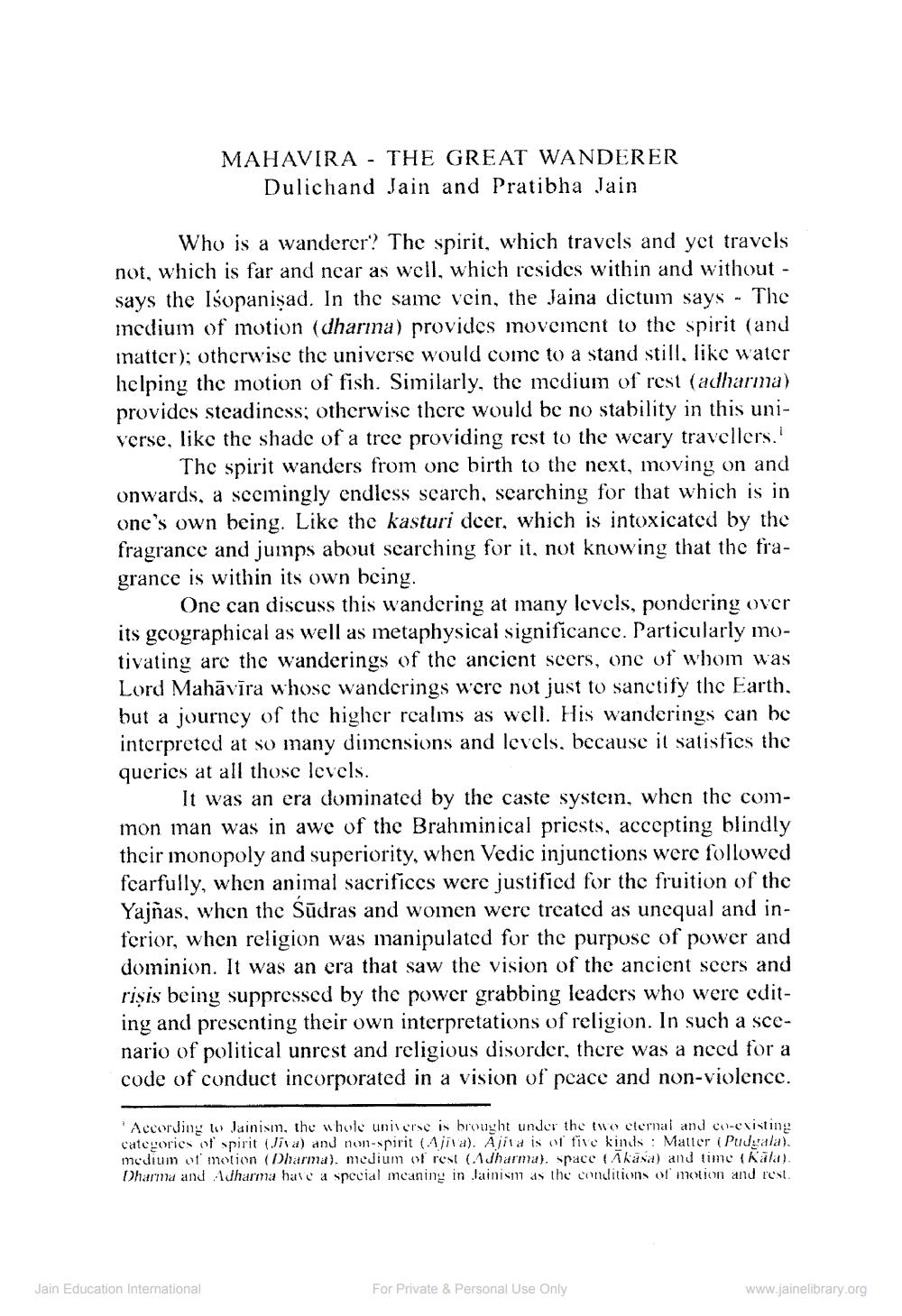________________
MAHAVIRA THE GREAT WANDERER Dulichand Jain and Pratibha Jain
-
Who is a wanderer? The spirit, which travels and yet travels not, which is far and near as well, which resides within and without - says the Isopanisad. In the same vein, the Jaina dictum says - The medium of motion (dharma) provides movement to the spirit (and matter); otherwise the universe would come to a stand still, like water helping the motion of fish. Similarly, the medium of rest (adharma) provides steadiness; otherwise there would be no stability in this universe, like the shade of a tree providing rest to the weary travellers.
The spirit wanders from one birth to the next, moving on and onwards, a seemingly endless search, searching for that which is in one's own being. Like the kasturi deer, which is intoxicated by the fragrance and jumps about searching for it, not knowing that the fragrance is within its own being.
One can discuss this wandering at many levels, pondering over its geographical as well as metaphysical significance. Particularly motivating are the wanderings of the ancient seers, one of whom was Lord Mahāvīra whose wanderings were not just to sanctify the Earth. but a journey of the higher realms as well. His wanderings can be interpreted at so many dimensions and levels, because it satisfies the queries at all those levels.
It was an era dominated by the caste system, when the common man was in awe of the Brahminical priests, accepting blindly their monopoly and superiority, when Vedic injunctions were followed fearfully, when animal sacrifices were justified for the fruition of the Yajñas, when the Śūdras and women were treated as unequal and inferior, when religion was manipulated for the purpose of power and dominion. It was an era that saw the vision of the ancient seers and risis being suppressed by the power grabbing leaders who were editing and presenting their own interpretations of religion. In such a scenario of political unrest and religious disorder, there was a need for a code of conduct incorporated in a vision of peace and non-violence.
Jain Education International
According to Jainism, the whole universe is brought under the two eternal and co-existing categories of spirit (Jiva) and non-spirit (Ajiva). Ajiva is of five kinds: Matter (Pudgala). medium of motion (Dharma). medium of rest (Adharma). space (Akasa) and time (Kala). Dharma and Adharma have a special meaning in Jainism as the conditions of motion and rest.
For Private & Personal Use Only
www.jainelibrary.org




